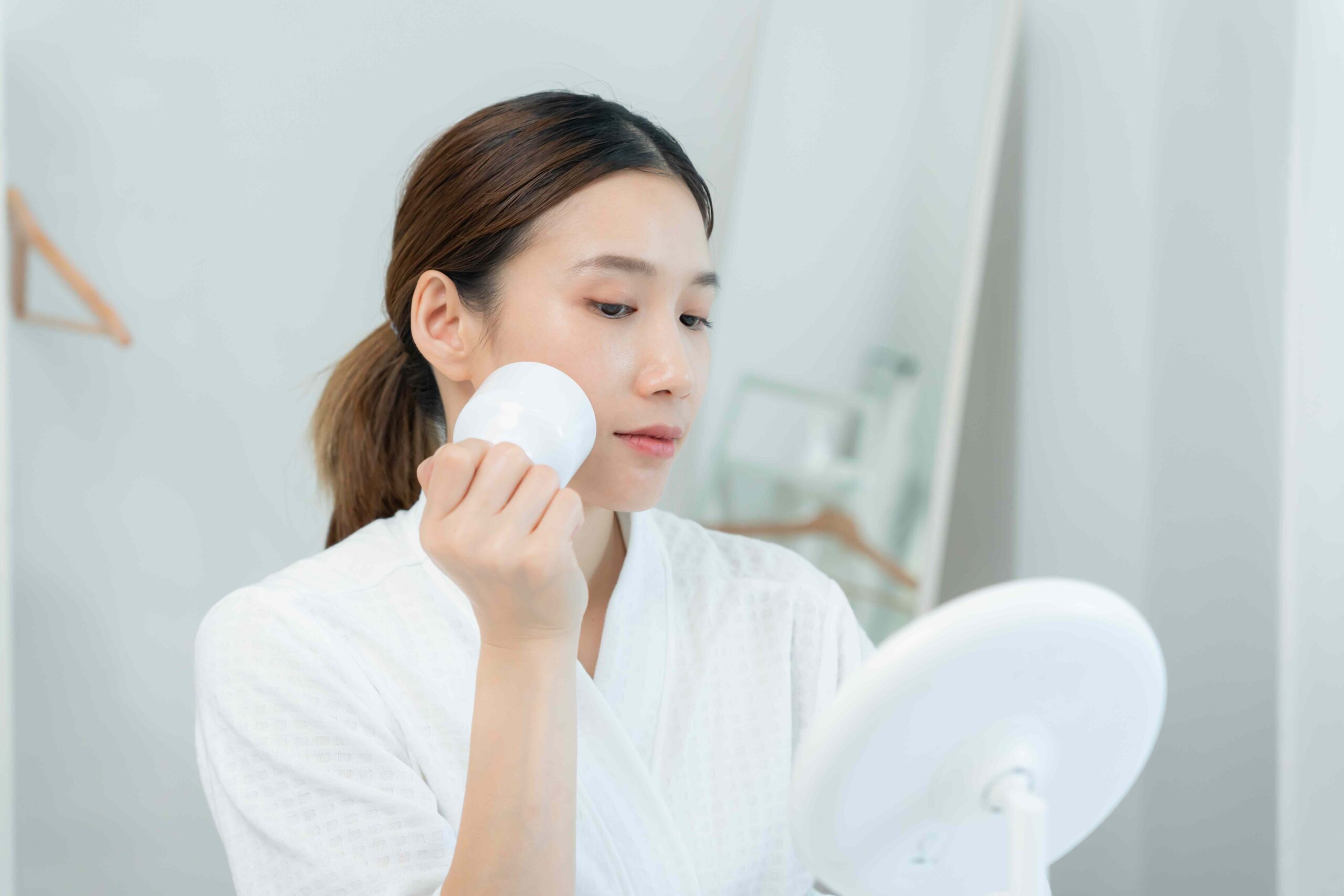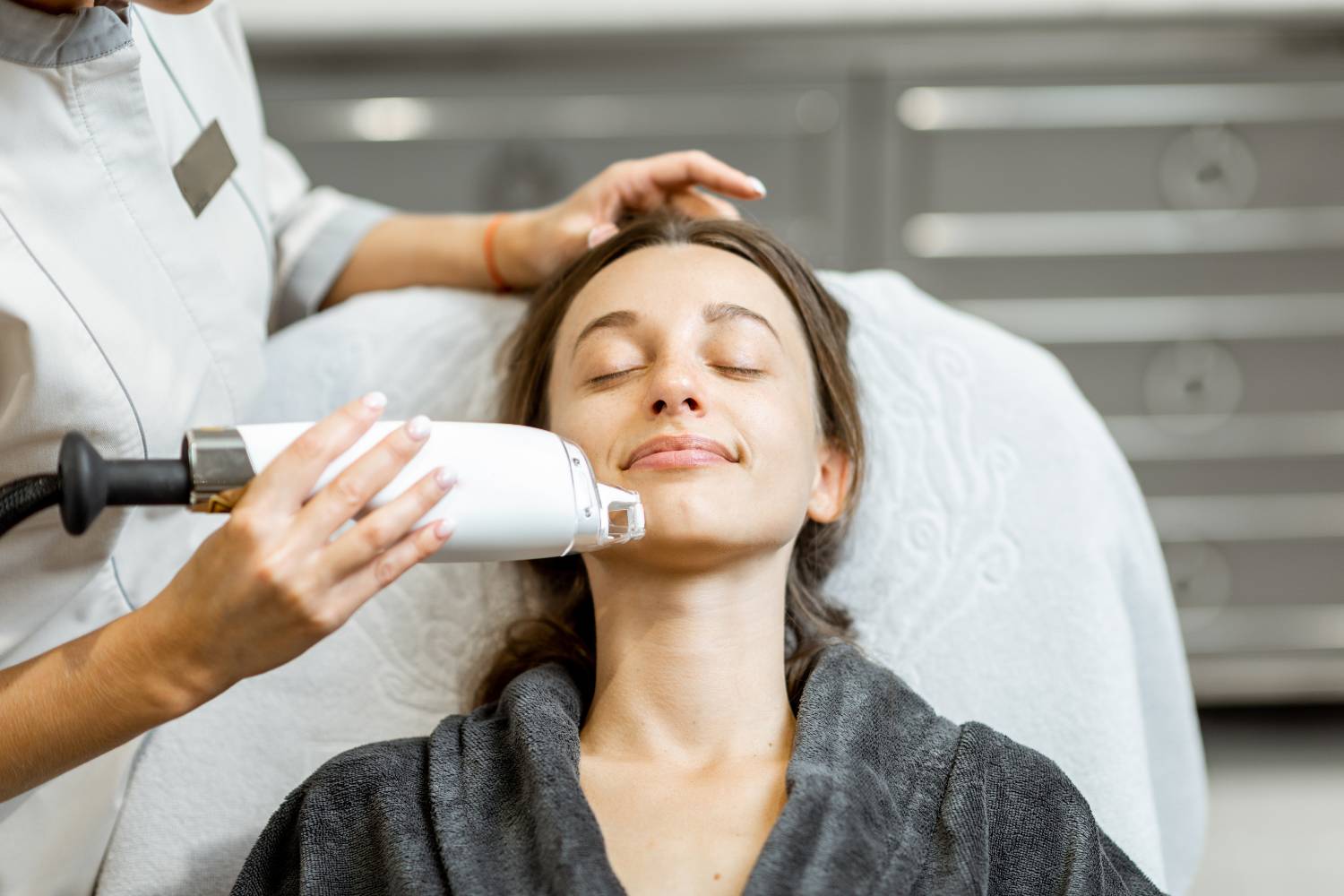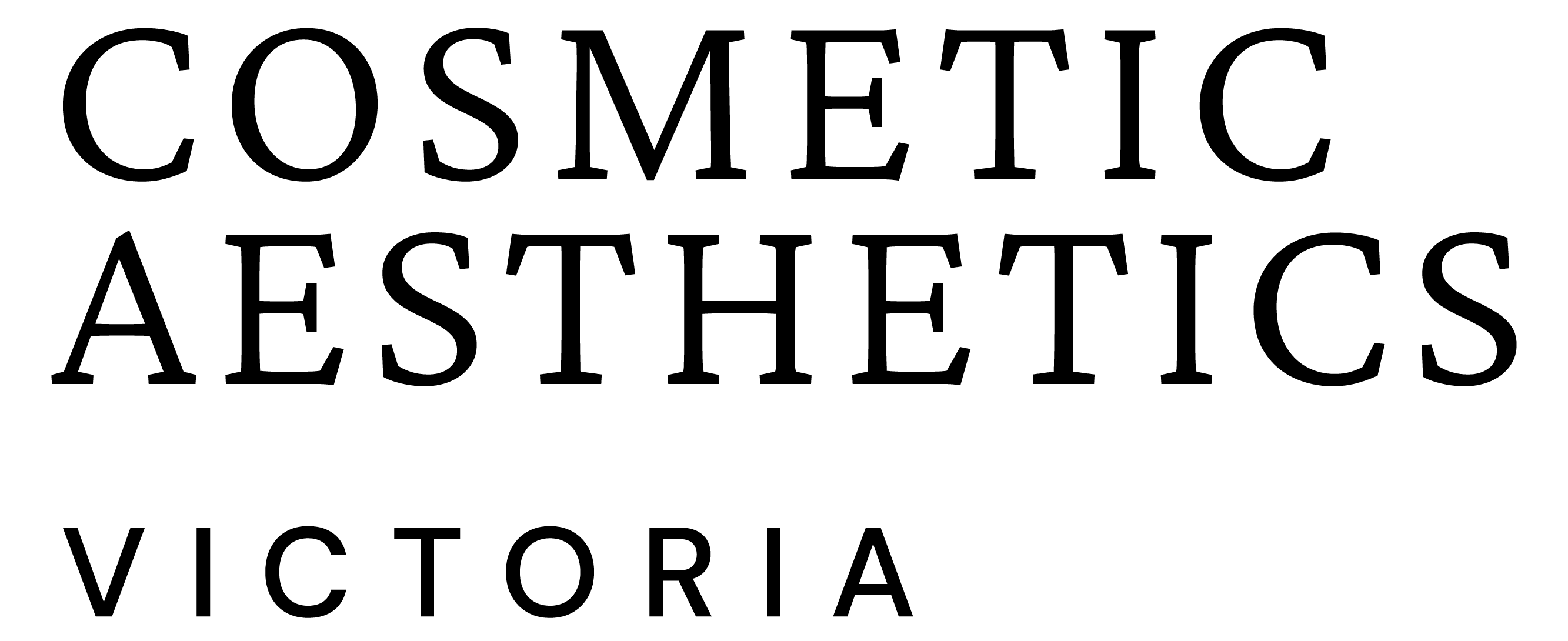
How Skin-Tightening Tools Have Become Handier for Self-Care At Home
At-home skin-tightening tools have rapidly become a staple in self-care routines, transforming the way we approach skincare. These devices have made it easier than ever to rejuvenate our skin without setting foot in a clinic. The beauty tech market, which includes these devices, has grown exponentially over the past few years, as people sought affordable and accessible alternatives to professional treatments.
I remember, not too long ago, feeling a bit sceptical about using such tools at home. After all, how could something that’s more affordable and easy to use provide the same results as a pricey professional treatment? But like many, I found myself gravitating towards these skin-tightening gadgets, especially as I began to notice fine lines and sagging around my eyes. So, I gave it a go—and let me tell you, it was a game-changer.
Why More People Are Turning To At-Home Beauty Routines?
One of the main reasons these devices have taken off is the undeniable convenience. Gone are the days of needing to book and attend multiple appointments just to maintain skin firmness or reduce wrinkles. Now, you can treat yourself to skin rejuvenation while watching your favourite Netflix series or sipping a cup of tea in your lounge room. The flexibility these devices provide is a huge plus, especially for people juggling busy work schedules, family commitments, and other personal priorities.
In my case, being able to integrate at-home skin tightening into my morning routine made all the difference. It was as simple as setting aside 15 minutes before work to perform a quick treatment, and the results, though subtle at first, gradually became visible. These gadgets are so user-friendly that even someone like me—who’s more familiar with skincare than with tech—could easily figure them out.
And then, of course, there’s the cost. At-home devices are significantly more affordable than professional treatments, which can run into the hundreds of dollars per session. The initial investment in a good skin-tightening device, however, is a one-off cost, and after a few sessions, it starts paying for itself—no more ongoing clinic visits. For many of us, this affordability is a key selling point. It gives you the option to maintain your skin’s youthfulness over time without breaking the bank.
The Surge In Demand For DIY Skin Tightening Solutions
The pandemic, in particular, drove a massive shift towards home beauty routines. When clinics closed, many people were forced to find solutions for their skincare needs at home. It wasn’t long before these devices flooded the market, and the demand soared. Suddenly, devices that once seemed niche were now mainstream, and people began discovering that they could replicate—and in some cases, even improve—the results of clinic treatments at home.
I remember chatting with a friend during the early lockdowns who had just started using a portable microcurrent device for her face. She mentioned how much smoother and firmer her skin felt after just a few uses. What struck me most was how quickly the word spread, especially on social media, where beauty influencers and skincare enthusiasts started sharing their own experiences with skin-tightening gadgets.
What started as an occasional curiosity grew into a full-fledged trend, with brands offering a range of devices designed for specific skin concerns—from sagging jawlines to crow’s feet. It was clear that these tools were no longer just a trend, but a new way to take care of skin. Now, whether you’re looking to reduce wrinkles, improve skin tone, or simply maintain that post-facial glow, at-home skin-tightening devices have become a must-have in many self-care routines.
Understanding The Technologies Behind Skin-Tightening Tools
Radiofrequency (RF) Technology: The Power Behind Collagen Boosting
One of the most popular technologies used in these home devices is radiofrequency (RF). It might sound like something out of a science fiction movie, but the concept behind RF technology is pretty simple. RF devices use electromagnetic waves to heat the deeper layers of your skin, which in turn stimulates the production of collagen and elastin—two essential proteins responsible for the skin’s firmness and elasticity.
I remember my first experience with an RF device, and honestly, I was surprised by how soothing it felt. The warmth of the device is quite gentle, and within just a few minutes, I could feel my skin being “lifted” slightly. That’s the magic of RF in action: it doesn’t just tighten the skin’s surface, but works on the deeper layers to rejuvenate and refresh the skin from within. It’s like giving your skin a gentle wake-up call.
What’s great about at-home RF devices is that they’re designed with safety in mind. While professional RF treatments typically use higher energy levels, home devices use bipolar or multipolar RF, which is safer for the delicate epidermis, helping to avoid overheating.
Microcurrent: A Non-Surgical Facelift In A Device
Another cutting-edge technology that’s often used in at-home skin-tightening tools is microcurrent. It might sound a little intimidating, but this device delivers low-level electrical currents that stimulate facial muscles and promote collagen production. It’s often referred to as a “non-surgical facelift,” and it’s no wonder—many users report tighter, more toned skin after consistent use.
When I first tried a microcurrent device, I was shocked by how much it toned my skin in just a few minutes. It feels like a gentle workout for your face. You can even feel the muscles under your skin contracting as the device works its magic. The results aren’t immediate, but after using it for a few weeks, I began to notice a subtle lift, especially around the jawline and cheekbones. It’s one of those tools where the longer you use it, the more noticeable the benefits become.
These devices are designed for all skin types, and with regular use, they can help lift sagging skin, smooth fine lines, and enhance facial contours. It’s like a mini personal trainer for your face—but without the sweat!
The Benefits Of At-Home Skin Tightening Devices

1. Achieve Professional-Looking Results Without The Price Tag
The most attractive feature of at-home skin-tightening devices, in my opinion, is the ability to get professional-level results without the hefty price tag. Professional skin tightening treatments like radiofrequency facials or ultrasound treatments at a clinic can easily cost hundreds of dollars per session. And when you factor in travel time and appointment scheduling, the costs—both financially and time-wise—start adding up.
In contrast, a good quality at-home device is a one-off investment. Over time, it’s far more cost-effective. For example, I’ve used a microcurrent device several times. It’s an investment upfront, but considering the results I get from it after just 5 minutes a day, it’s significantly cheaper than monthly clinic visits. Plus, it’s incredibly convenient. I can use it while I’m doing my makeup, watching TV, or catching up on a podcast. It’s become part of my daily self-care ritual—effortlessly fitting into my busy schedule.
Now, don’t get me wrong—results won’t be as dramatic or immediate as professional treatments. At-home devices work at lower power levels for safety reasons, which means you might need a bit more patience. But for many, the cost savings and flexibility make these devices well worth it. They offer a sustainable solution for those of us who want to maintain skin firmness, especially as we age, without constantly shelling out for expensive treatments.
2. Boosting Collagen And Elastin For Firmer Skin
What makes these skin-tightening tools so effective is their ability to stimulate collagen and elastin production. These two proteins are the building blocks of youthful, firm skin. Collagen provides structure and elasticity, while elastin allows the skin to stretch and return to its original shape. As we age, both naturally decline, leading to wrinkles, sagging, and a loss of that youthful bounce in the skin.
Using devices like radiofrequency (RF) or microcurrent tools regularly can help stimulate your body’s natural collagen and elastin production, rejuvenating your skin from the inside out. Personally, after consistently using an RF device at home, I noticed that my skin felt firmer and more elastic, particularly around the jawline and neck area. It’s almost like a natural “lift,” without the need for needles or scalpels.
But here’s the key: consistency is crucial. Just like you’d commit to your skincare routine with cleansing, moisturising, and applying sunscreen, skin-tightening tools require regular use to see long-lasting effects. It’s not an overnight miracle, but rather a gradual improvement that builds over time.
3. Convenience And Flexibility: Treat Yourself Anytime, Anywhere
Gone are the days of needing to schedule professional appointments that can eat into your day. With at-home skin-tightening tools, you can treat yourself whenever it suits you. Whether it’s first thing in the morning or after a long day, these devices offer unparalleled flexibility.
When I first got my microcurrent device, I was amazed at how easy it was to fit into my schedule. There was no rush to get to an appointment, no traffic to deal with, and no long recovery time. I could use the device right before bed or while getting ready in the morning—whatever fits my routine. This level of control over the process made it feel more like a luxurious treat than a chore.
For busy professionals or parents, this flexibility is a game-changer. And it’s not just about convenience—at-home tools make it easy to stick to your routine. You can fit in a skin-tightening session between tasks, making it far easier to stay consistent compared to scheduling regular clinic visits. In today’s fast-paced world, this flexibility is a huge draw.
4. User-Friendly And Effective
Another reason I love these devices is how easy they are to use. Unlike professional treatments, which require a trained practitioner, at-home tools are often designed for complete beginners. Most come with clear instructions, user-friendly designs, and adjustable settings to tailor the treatment to your needs. Whether you’re a first-time user or a seasoned skincare pro, these devices are designed to make skin-tightening accessible to all.
I was initially nervous about using such devices on my own, but after a quick tutorial and reading through the manual, I was able to get started right away. Most of the at-home tools I’ve used are intuitive and safe, with features like automatic shut-offs, temperature control, and built-in timers to ensure a hassle-free experience. Even if you’ve never used a skin-tightening device before, they’re often so simple to incorporate into your routine, which takes the guesswork out of the process.
Limitations And Risks Of At-Home Use
While at-home skin-tightening devices offer many benefits, there are some limitations and risks that need to be considered before diving in.
Why You Might Not See Instant Results?
One thing I’ve learned from my own experience is that these devices are not magic wands. Results aren’t instant, at least not to the same degree as they might be in a professional treatment setting. The reason for this is simple: at-home devices generally use lower energy levels than those found in professional machines, meaning the results take time to manifest.
In my case, I saw noticeable tightening and improved skin texture after a few weeks of regular use, but it wasn’t like I walked out of a clinic with instant, dramatic results. Instead, I noticed subtle improvements that grew over time. This might be frustrating if you’re looking for quick fixes, but it’s the trade-off for having a non-invasive, more affordable solution. You need to be patient and realistic with your expectations.
Potential Side Effects And Misuse
One of the challenges with using any skincare device at home is the potential for misuse. Just like with any beauty gadget, improper use of skin-tightening devices can lead to side effects like redness, irritation, or, in rare cases, burns. That’s why it’s essential to follow the instructions carefully and use the device as recommended.
For example, I’ve seen friends who’ve used the device too frequently, thinking more is better, and ended up with irritated skin. Overuse can cause redness and even damage the skin, especially if the device is too powerful for sensitive areas like under the eyes. It’s crucial to know your skin’s limits and give your skin time to recover in between sessions. Consistency is key, but moderation is just as important.
The Lack Of Professional Supervision
While these devices offer the convenience of at-home use, they don’t come with the benefits of professional supervision. A trained dermatologist or aesthetician can customise a treatment plan based on your skin type and needs, and they can also intervene if anything goes wrong. At home, you’re on your own.
This is where I’d recommend consulting a professional if you have any skin conditions or concerns. A quick chat with a skincare expert can give you valuable insights and help you avoid making mistakes with the device.
Limited Research On Long-Term Efficacy
While there’s growing evidence supporting the effectiveness of at-home devices, there’s still limited long-term research on their safety and efficacy. Most studies on home devices tend to focus on short-term results, which means we don’t know as much about how these devices work over the years. I’ve personally seen good results in the short term, but long-term effectiveness is still something to consider.
While at-home devices are often designed with safety in mind, it’s always important to weigh the pros and cons and make an informed decision. Keep track of your progress over time, and if you notice anything unusual, it might be worth consulting a professional.
Professional Skin Tightening Vs. Home Devices: What You Need To Know

|
Aspect |
Professional Treatments |
At-Home Devices |
|
Energy Levels |
Higher energy levels, more intense |
Lower energy levels for safety |
|
Treatment Depth |
Targets deeper layers of the skin |
Shallower penetration, gentler on the skin |
|
Results |
More dramatic, noticeable improvements in fewer sessions |
Subtler, gradual results over time |
|
Cost |
Significantly higher cost |
More affordable and accessible |
|
Downtime |
Potential downtime required |
Minimal to no downtime |
|
Convenience |
Appointment-based, less flexible |
Use at your convenience, no appointments required |
Best Practices For Using At-Home Skin Tightening Tools Safely And Effectively
Consult A Professional Before Starting
Before diving into the world of at-home skin-tightening devices, it’s always a good idea to consult with a professional, especially if you have specific skin concerns. I was initially cautious about using devices on my sensitive skin, so I visited a dermatologist to get their opinion. It turned out that a microcurrent device was perfectly suited for my skin type, and they also recommended a few tips on how to optimise my results.
By consulting a professional, you can ensure that the device you choose is appropriate for your skin, and you can get personalised advice on how often to use it and which settings are best for your skin’s needs.
Read And Follow Instructions To Avoid Mistakes
I can’t stress this enough—always read the instructions! When I first started using my RF device, I was a bit too eager and used it for longer than recommended. The result? A bit of redness and mild irritation. I quickly learned the importance of sticking to the manufacturer’s recommended usage guidelines. At-home devices are generally safe when used correctly, but improper use can lead to unwanted side effects like irritation, burns, or bruising.
Each device comes with its own set of instructions, so whether it’s a microcurrent tool, an LED device, or an RF machine, make sure to follow the instructions to the letter. Don’t rush the process; these tools work best when used consistently and correctly.
Look For Devices With Built-In Safety Features
When choosing an at-home skin-tightening device, I always recommend looking for features that ensure safety, such as automatic shut-offs, adjustable settings, and clear temperature control. Those from well-known, reputable brands tend to have these built-in safety features. The first time I bought a skin-tightening device, I made sure it had temperature control to prevent overheating, which is a concern with some RF devices.
Devices with safety features ensure you’re getting the most out of your treatment while minimising risks. Always opt for devices that are reputable and come from trusted brands.
Be Consistent But Cautious
Consistency is key when it comes to using skin-tightening devices at home. For example, microcurrent devices require regular use to see noticeable results. I used my device every other day for about 6 weeks before I started to see the lifting effect on my skin. However, while consistency is important, it’s also vital to use these devices cautiously. Overuse can lead to skin irritation, especially if you’re using a higher-powered device like RF or ultrasound.
If you’re ever in doubt, it’s always better to start slowly and gradually increase usage rather than going all in right from the start.
Maintain Overall Skin Health To Maximise Results
While these devices are a great tool in your skincare arsenal, don’t forget about the basics. A consistent skincare routine that includes cleansing, moisturising, and applying sunscreen is essential to maintain your skin’s health. I make sure to apply a good sunscreen every day, especially when using RF devices, as they can make the skin more sensitive to UV damage.
By pairing your at-home skin-tightening device with a solid skincare routine, you’re maximising its effects and supporting your skin in the long run.
At-home skin-tightening devices have proven to be an accessible and effective way to maintain skin firmness and youthful appearance from the comfort of home. While they may not deliver the instant results of professional treatments, they offer a cost-effective and flexible alternative for long-term skin health. However, it’s crucial to choose the right device for your skin type, use it properly, and maintain a healthy skincare routine.

